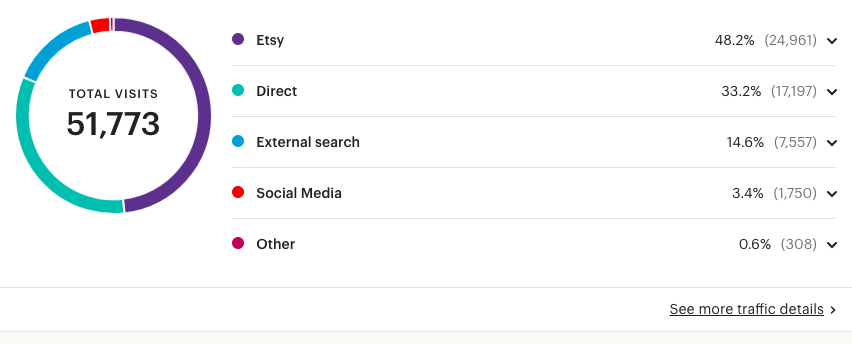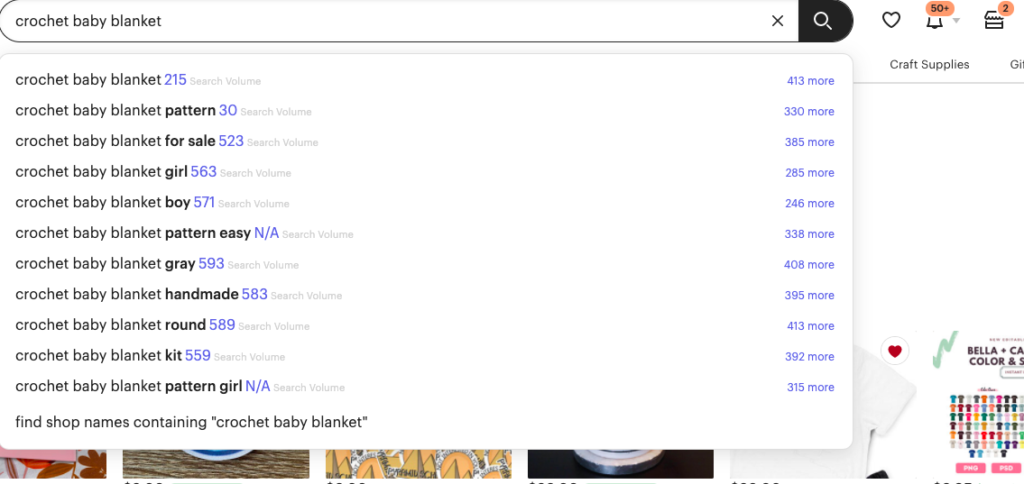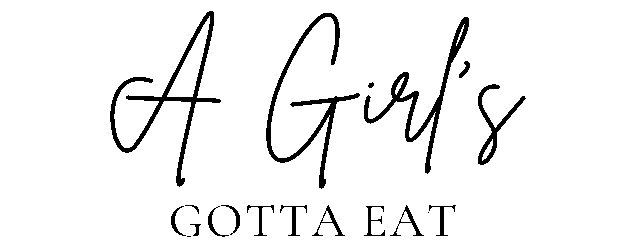What to Know About Etsy SEO Before You Start Your Shop

If you’re thinking about starting an Etsy shop, there is one free tool that is absolutely critical to succeeding with any online store. No, it’s not beautiful images. It’s not a flashy website. It actually has nothing to do with what customers will look at when they reach your store.
So what is this secret that’s so important to Etsy success?
Search engine optimization.
More commonly known as SEO, search engine optimization uses a combination of technical and creative elements to help bring traffic to your items through organic web searches on Google, the Etsy search bar, and elsewhere. These search engines rely on the keywords used in your listing title, description, and tags, which help Etsy and Google understand what the product is and who they should show it to in search results. The better you are at SEO, the more your items will show up on web searches, regardless of your social media presence, how long you’ve been selling, or how much you spend on marketing. Good SEO is the backbone to all of that, which is why it’s the first thing you need to understand before starting an Etsy shop.
(This post contains affiliate links)
How to Use SEO for Etsy Success
My first introduction to SEO was in the early-2000s when I sold handbags on eBay and wrote a beauty blog, so at this point it’s a skill that comes somewhat naturally to me. When I opened my Etsy shop back up in 2017 to sell printables, my goal was to get all of my photos and designs listed, then ignore it for a while and see what happened. Thanks to SEO, this wasn’t that difficult to do (although I do not recommend ignoring your shop for months as a new seller). Check out my stats from 2018, where more than 60% of my visitors came from search:

Here are my top tips for SEO beginners who want to open an Etsy shop:
Think like a shopper.
SEO requires you to know a lot about your customers. Don’t have any customers yet? Then you’re going to have to know a lot about your target customers. When you’re selling online, SEO is the most efficient way to get your products in front of buyers. This is done using keywords that describe your item and include words that your ideal customer might type into Google when searching for your product. If this sounds overwhelming, keep in mind that SEO is more about having an intuitive understanding of your target customers and how SEO works for you rather than about becoming a technical expert at SEO algorithms.
Back to keywords. For example, let’s say you’re selling printable wall art for nurseries. Think about the person who would be searching for this product and what they might type into the Etsy search bar, such as:
Nursery Wall Art
Printable Nursery Decor
Jungle Nursery Wall Art
Printable Wall Art
Floral Nursery Decor
Feminine Nursery Decor
Boy Nursery Decor
Nursery Gift
Purple Nursery Wall Art
Baby Shower Gift
You’ll want to make a list of keywords like these for each product you create and use these keywords throughout your titles, tags, and descriptions. Start by making a list based on what you know about your customer and product. If you need help coming up with keywords, type some of them into the Etsy search bar and see what keywords come up in other people’s listing titles for inspiration. You can also use a tool such as Google Keyword Planner, Erank, or Sale Samurai to help come up with keywords.
Prioritize the First 40 Characters of Your Listing Titles
One obstacle between Etsy sellers who want to succeed and search engine optimization is creativity and overthinking. When you’ve spent months working on a painting or piece of jewelry, it’s only natural to want to give it the perfect name that will live with it through time. You have every right to name your piece Mourning Lobster and refer to it only as such, but you’re not going to get your Etsy listings seen if the listing title only says “Mourning Lobster”. Great name, but terrible for SEO. Unfortunately, you’re going to have to give up on the idea of using your Etsy titles artistically. If you want to be seen, you’ve got to please the algorithms.
Your listing title is the most important spot for prioritizing SEO. Google results show up to the first 66 words of a listing title, so you’ll want to make those count the most. Titles are less about being artsy and creative and more about getting the right keywords in without looking clunky or overwhelming. That’s why you’ll see lots of Etsy shops (mine included) with titles that have several phrases when only one or two are needed to describe the item.
For example, if I were making a title based on the nursery keywords listed above, it would look something like this:
Nursery Wall Art, Feminine Home Decor, Floral Nursery Printable, Floral Home Decor, Girls Nursery Artwork, Baby Shower Gift
You can use dashes, commas, or whatever separators you prefer. Google and Etsy don’t care if it looks like that or a string of words, as long as the words are there.
Nursery wall art is #1 in the title because that’s what I want prioritized by Etsy and Google. In your titles, it helps to do a combination of general keywords (nursery art) and more specific keyword phrases (feminine home decor) to increase your reach without getting too niche or too broad.
The First 160 Characters of Your Description are the Most Important
The first 160 characters in your description are what show up as the meta description in search engine results, so it’s important to put it to good use. The good news is that this is where you can FINALLY get creative, but also make sure to include every detail a customer might want to know about your item, including:
Materials
Size
Shape
Texture
Color
Customization options
Care instructions
I like to give my items a brief description that includes keywords and looks good in search results, followed by a list of attributes. Example:
This floral design makes the perfect feminine decor for a purple girls room or nursery. Print these files in any size, as many times as you want.
Size:
Color:
Printing instructions:
Fill in EVERY SINGLE TAG
I cannot stress this one enough. Etsy gives you 13 tags to describe your item. That’s 13 unique opportunities to attract a new customer coming from a different direction. With tags, the order you type them in doesn’t matter, but they do have a limit of 20 characters.
For maximum efficiency, at least a few of these should match the exact keywords in your title. If “feminist sweatshirt” is in your title then you better have a tag for “feminist sweatshirt” as well. The order of your tags doesn’t matter, the capitalization of your tags doesn’t matter, all that matters is you USE THEM ALL.
Avoid Keyword Cannibalization
Keyword cannibalization means what it sounds like – if all your listings have the exact same keywords and phrases in their titles, tags, and descriptions, search engines will not know which one to show and they will eat away at each other’s ranking. Bad news when a couple words could be the difference between a slow month and fat cash.
For example, my digital items all qualify as “printable wall art,” a popular search term on Etsy. I use that phrase in most of my listings, but sometimes I will use “printable art” or “printable home decor” instead. I also maximize my reach among some of my most popular keywords by starting a few listing titles with these more general phrases instead of my go-to approach for my title, which is to start it with a more specific description like “feminist quote print” or “Michelle Obama digital download.” This information can all be added in the title as well, but changing up the first 40 characters and bringing diversity to your tags will prevent them from eating away at each other’s ranking. This is another reason why I love using Sale Samurai: it will help you come up with a larger variety of keywords you might not have thought of on your own.
Check Your Etsy Stats Regularly
The shop stats in your Etsy dashboard provide a wealth of information, including which search terms have brought people to your shop. You don’t need to look at this every day – once or twice a month, go through your stats to see what people are searching for that’s bringing them to your products. This will help you better understand your target customer, and it’s a great indicator of what kinds of products you should be prioritizing when you add new listings.
Try Etsy SEO Tools Like Sale Samurai and Erank
It’s definitely possible to grow your shop without spending money on SEO tools, so don’t stress if you can’t justify it just yet. If you want to try out a free SEO tool, I recommend starting with Erank. This is what I used in the beginning to help me research my competition and come up with keyword ideas, so I recommend trying it out since there is a free version for beginners.
The tool I now use exclusively is Sale Samurai, a paid Etsy SEO tool. I love this tool because of Chrome extension and competition trackers which are worth every penny. The Chrome extension will automatically include search volume when you type a keyword into Etsy, like this:

You can then click on the number at the end, which will bring up a full list of search volume and how many listings are currently using that phrase:

Use the search boxes at the top to narrow the list further. I recommend using a combination of keywords with high search volume and keywords with low competition. If you’re ready to give Sale Samurai a try, you can use the code AGIRLSGOTTAEAT for 20% off when you sign up through my affiliate link (I only share products on this blog that I personally use and recommend, and this is currently my favorite Etsy SEO tool). If you sell print-on-demand products, Sale Samurai also has an uploader that allows you to automatically upload your designs onto POD merch. I haven’t tried that part yet.
Remember – Good SEO Takes Time!
SEO is one of the best tools out there for getting your items noticed on Etsy, but it is not going to make you an overnight success. Good SEO can take weeks to expand your reach, so my suggestion is to get all your titles and tags optimized how you want them, then wait AT LEAST a month before touching it. Seriously – DON’T TOUCH IT. Be patient, keep researching your customers through your Etsy Stats, and before long it’s a second nature practice.
I hope this makes it easier for you to get a successful Etsy shop up and running. If you haven’t started one yet, use my link and we’ll both get 40 free listings.
Check out more of my Etsy content:
How to make and sell printables on Etsy
20 types of printables you can sell on Etsy







Excellent article, special thanks for the detailed example!
Thanks this information was very useful and clearly explained.
Great Insight! What is your shopname please, so I can check out your items?
I am typically not a comment leaver but I just LOVE your articles. It’s your writing style- it’s logical and perfect. You had me when you first cussed! Lol Thanks!
Haha I love this – thank you so (fucking) much!
Love reading your tips, thanks for sharing
What excellent and informative information you have given
Your readers Thank you so much!
Thank you so much for this article. While I am not on Etsy, I have been struggling with keywords and SEO. I thought I understood it, and then the more I read, the more confused I became. Your article has really given me a grasp of “what” to search for when doing keyword research and “how” to apply what the research shows me.
Thank you Cindy, I’m glad it was helpful for you! Thanks for reading!
Great article! 😃
Do you think it is possible to resurrect pretty much ‘dead’ listings? (Basically, I listed over 700 items in one hit, with poor SEO).
Or, should I delete all my current listings & start from scratch again (with good SEO)?
Thank you in advance 🤗
Mel
You can definitely revive them, I would do that and clean up the titles/tags/descriptions rather than spend time re-listing everything.